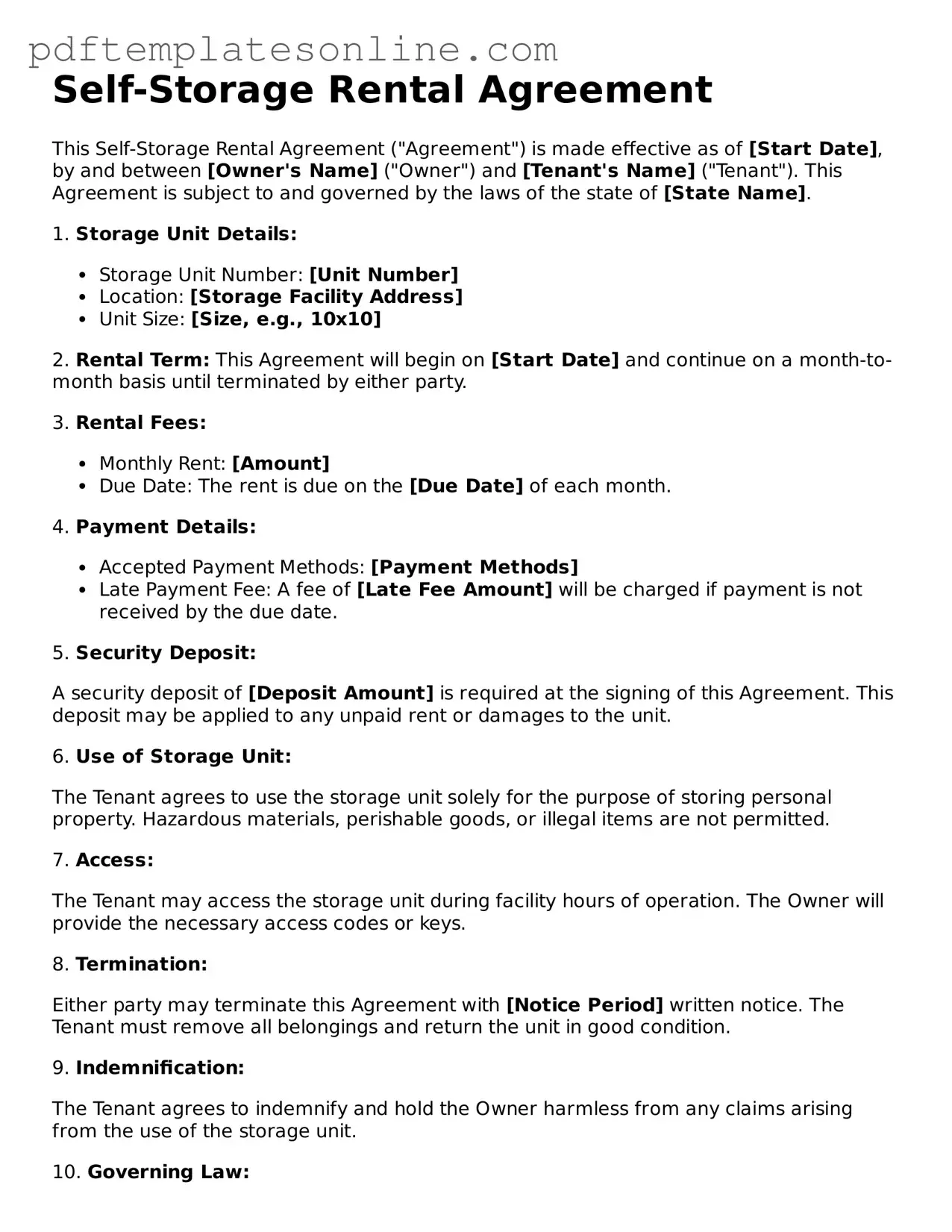Filling out a Self-Storage Rental Agreement form can be a straightforward process, but many individuals encounter common pitfalls that can lead to complications. One frequent mistake is not providing accurate personal information. It’s essential to double-check your name, address, and contact details. A simple typo can lead to significant issues when the facility needs to reach you.
Another common error is neglecting to read the terms and conditions thoroughly. Many renters skim through the agreement, missing crucial details about payment schedules, late fees, and access hours. Understanding these terms can prevent misunderstandings and unexpected charges down the line.
Additionally, some people fail to specify the correct storage unit size. Choosing a unit that is too small can lead to frustration as you try to fit your belongings. Conversely, renting a unit that is too large may result in unnecessary costs. Assess your storage needs carefully before making a selection.
Providing insufficient identification can also create delays. Most facilities require proof of identity, such as a driver's license or a government-issued ID. Ensure you have the necessary documentation ready when filling out the form to avoid any hold-ups in the rental process.
Lastly, overlooking the rental duration is a common mistake. Be clear about how long you intend to rent the unit. Some agreements may automatically renew, while others may require you to specify the rental period. Clarifying this detail upfront can save you from unwanted surprises later on.
